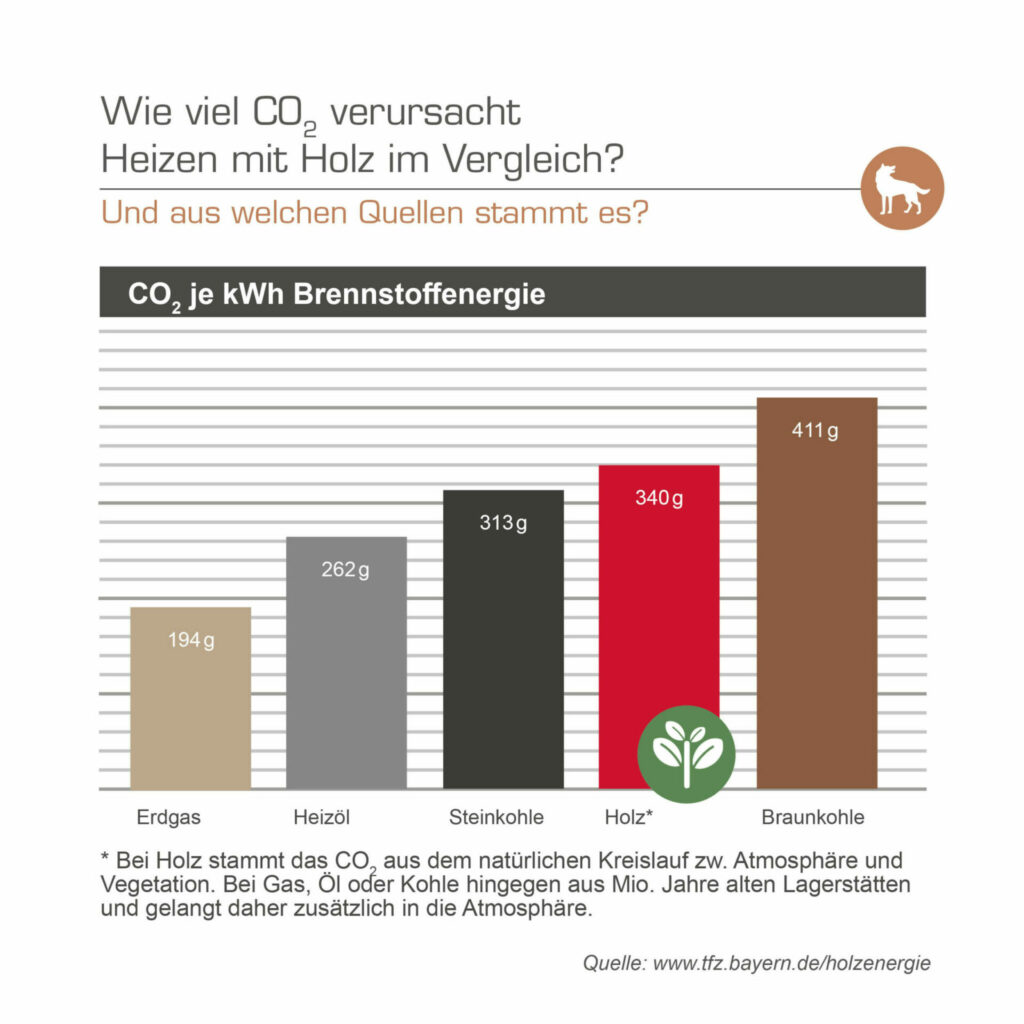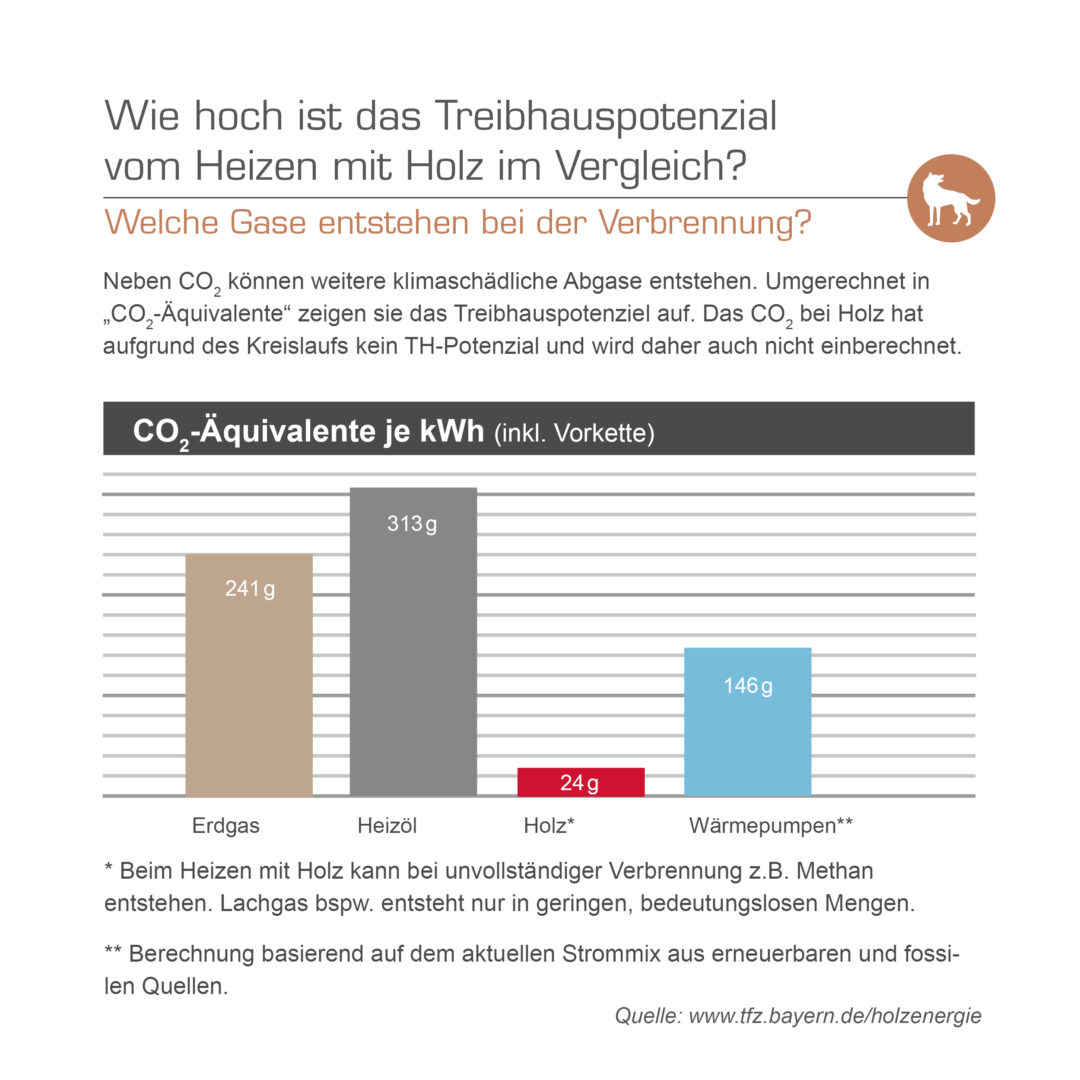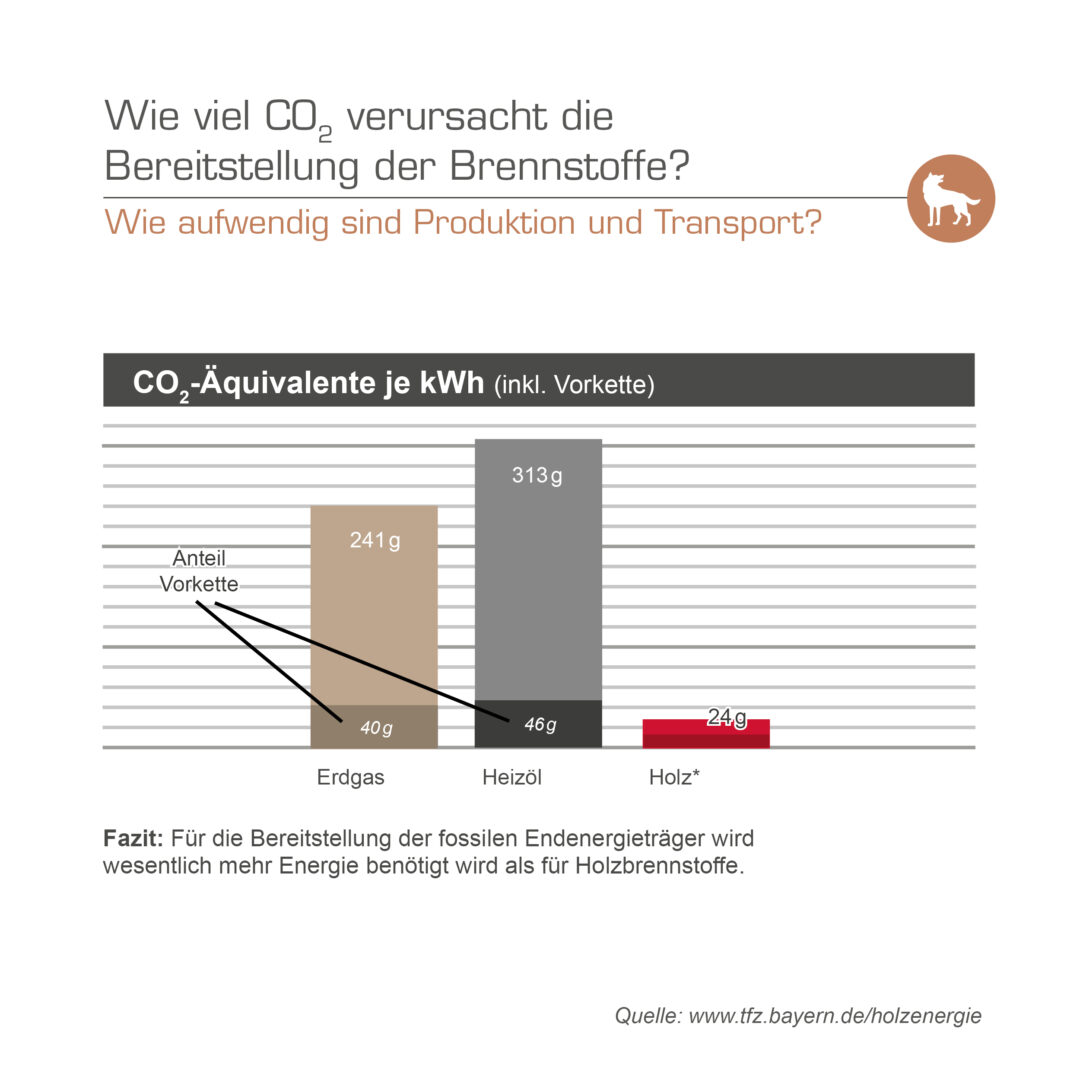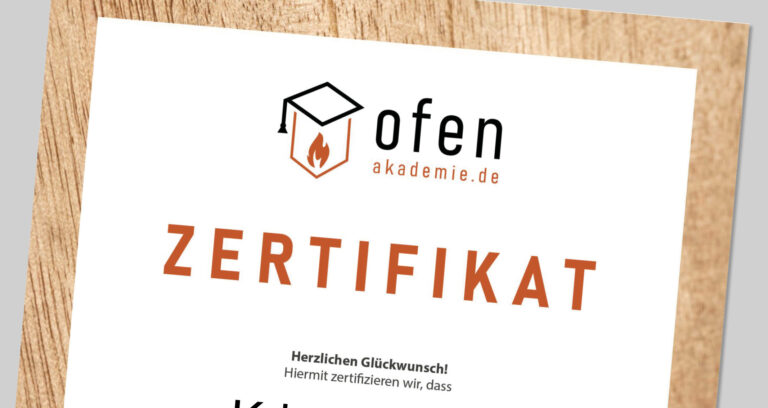Heating with wood - sustainable or climate-damaging?
This question is repeatedly asked and controversially discussed.
The German Technology and Promotion Center in Straubing (TFZ) has been researching the energetic use of biomass for almost fifty years and is now taking a stand on the most common theses – in a very well-founded and differentiated manner. We would like to share this with you:
How much CO2 does heating with wood produce?
The combustion of carbon-containing fuels inevitably leads to the formation of CO2. Compared to other energy sources, burning wood leads to a high release of CO2, which often leads to criticism that heating with wood is not sustainable.
However, in addition to the quantity, it is also important to consider where the carbon comes from. In the case of wood, it has only recently been removed from the natural cycle between the atmosphere and vegetation. At the latest when the tree rotted, it would have been the same. It can also be assumed that it will be bound again by regrowing trees. In the case of fossil fuels, on the other hand, it comes from deposits millions of years old that have bound the CO2 over a long term. When these fuels are burned, CO2 is therefore additionally released into the atmosphere.

What is the global warming potential of heating with wood?
If you want to assess how environmentally friendly different heating systems are, CO2 emissions alone are not a sufficient criterion. On the one hand, there are other climate-damaging gases (e.g. methane) that also need to be considered. And secondly, the global warming potential of emissions varies greatly. They would therefore have to be weighted accordingly.
Science does this on the basis of so-called “CO2 equivalents”. “CO2 equivalents” take into account both the amount of greenhouse gas released into the atmosphere and its short- and long-term thermal impact on the climate.
Due to the existing cycle of the raw material wood, its CO2 does not affect the climate and is therefore not included in the calculations here. Despite its technically high CO2 emissions, heating with wood therefore has the least negative impact on climate change.

How much energy does it take to produce firewood compared to other fuels?
When calculating the “CO2 equivalents” of different heating systems, the production and transportation alone often have a significant impact. In the case of fuel oil and natural gas, for example, the emissions from these preceding steps alone are already higher than the total emissions generated by heating with wood. The regional availability of raw materials therefore plays an important role in their sustainability balance.
This is one of the reasons why heating with wood can make an important contribution to the energy transition here in Germany. After all, Germany is the country with the most timber in Europe and the changing climate conditions require anyway that we harvest old spruce trees and replace them with more climate-resistant varieties. In addition, sustainable forest management is a legal requirement in Germany and firewood is without exception waste wood that is produced during forest management.

And what about the emission of so-called "black carbon" particles?
One factor that the “CO2 equivalents” do not take into account, although they have a very high global warming potential, are the so-called “black carbon” particles. These are light-absorbing, carbon-containing particles that have an increasing influence on global warming due to their black color. The contribution of this so-called “black carbon” is difficult to quantify and is therefore not (yet) taken into account in the calculations of “CO2 equivalents”.
However, as the greenhouse gas factor of “black carbon” can be very high, namely between 100 and 1700 times that of CO2, this aspect must not be ignored in a differentiated analysis. The TFZ has therefore carried out measurements on “black carbon” emissions from wood-burning stoves – under realistic conditions but also with defective or deliberately incorrectly operated stoves.
The result: “Black carbon” is primarily produced by incomplete combustion under unfavorable or uncontrolled conditions. There are almost no black carbon emissions from automatically fired central heating systems, whereas with manually fed wood-burning stoves it is very important that they are operated correctly.
Information on the correct operation of wood-burning stoves is therefore an important prerequisite for the sustainability balance of heating with wood. However, according to the TFZ, even in the worst-case scenario, the climate-damaging potential of a wood-burning stove with high emissions is currently still significantly lower than that of a heat pump heating system, which is largely powered by electricity from fossil sources. Combining the heat pump with a wood-burning stove is therefore very clever. The combination with a stove increases the efficiency of the heat pump and reduces the proportion of fossil fuels used.
Conclusion:
Despite frequent criticism, heating with wood is therefore very sustainable and is currently one of the best options.
In the long term, it can also make an important contribution to the energy transition and complement the energy mix from renewable energies. And don’t forget: it makes you independent of energy imports.
More blog posts

Video series: operating a wood-burning stove correctly
Heating with wood is sustainable – provided it is done correctly. We explain what you need to consider when heating with wood and how to operate a stove efficiently and with low emissions!

Do you already have a “stove certificate?”
The majority of emissions from heating with wood are caused by improper operation. This is why owners of wood-burning stoves need to be better trained. And this is exactly what the stove driving license does.

The advantages of a handcrafted stove
The supply of industrially manufactured steel stoves in DIY stores is booming. However, handcrafted stoves have many advantages and are superior in many respects.



